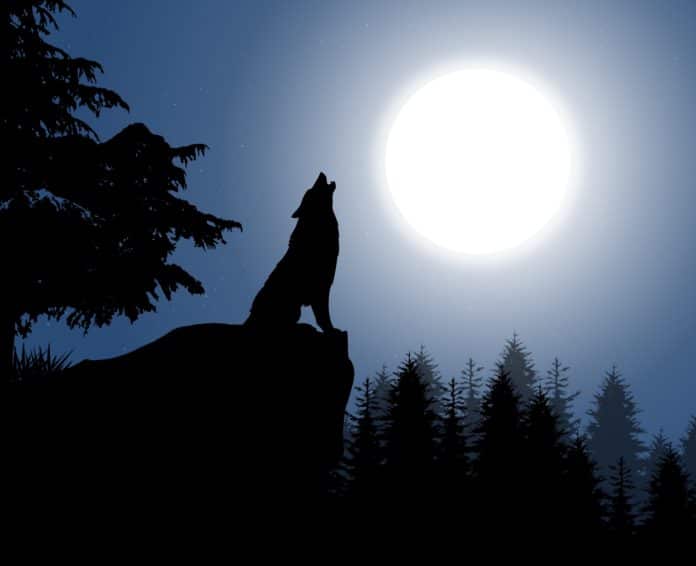Here we are in 2022, a new year. We’ll be looking at a full moon whose name was given out hundreds of years ago. On January 17th we will have a Wolf Full Moon. The Native Americans gave it this name. To them the Wolf Moon meant not just a single night of the year but a whole month, or lunar cycle. The January moon appeared when wolves howled outside their villages. The cries could be heard for miles.
Why do wolves howl? Are they hungry? Are they lonely? Wolves howl for various reasons actually! Besides howling, they vocalize in other ways by barking, growling, or whimpering. They cry out to define territory or to locate other pack members. Wolf territory can cover 25-150 square miles or more. The territory size is regulated by the pack, availability of food, and the time of year. Pack members are extremely loyal and will protect each other even to the point of death. Wolves howl to reinforce social bonds. They cry out to coordinate hunting efforts and rally the group. They have to cover many miles and must know where other members are. It is also a myth that wolves howl at the moon. Wolves are nocturnal. They hunt and gather together at night. That puts them out there when the moon shines bright.
People of the Northern Great Plains called it the Center Moon because it occurred in the middle of the cold season. Other names given for January’s moon have references to winter or the cold temperatures; For example, Cold Moon, Frost Exploding Moon, Freeze Up Moon, Severe Moon, and Hard Moon. The last two names refer to living conditions. Imagine all the work involved to survive their harsh winters!
This is the first full moon after the winter solstice of December 21st. This earned it the name Moon After Yule, meaning “Christmas is past.” After the shortest day of the year occurs in January, each day after stays brighter and for longer. Each 24 hour measurement of January adds a few more minutes of daylight to our evenings. Pretty soon you will begin to notice it!
As the moon cycles, the planets also cycle and change in their rotation. Venus, which was last seen in December’s twilight, now emerges in mid-January as a bright morning star. On the morning of January 29th if you get up early enough, say 5 am, you may see Venus, Mars, and the waning crescent moon. All will be visible for a time in the southeastern sky just before sunrise. Venus, the closest planet to Earth, will be easy to spot. It looks like a bright star in appearance. Mars, our second smallest planet, will be harder to notice. It rises as a red glowing light to the left of the crescent moon. Mars has an atmosphere of iron oxide or rust particles always swirling around to give it that color. Two mornings later the crescent moon is gone from sight and a New Moon arrives on February 1st.
Another visible planet in January’s sky is Jupiter. It is visible as a silver-white star to the west, shortly after sunset. Each night it goes a bit lower toward the horizon. It is the third brightest object in the night sky; Only the moon and Venus are brighter. We’ll be able to see Jupiter after sunset from now until the middle of February. Then it will slip from sight and emerge as a morning star in late March. Interesting how the planets rotate, change, and brighten up our nights and mornings! They are sure to brighten up our New Year!

